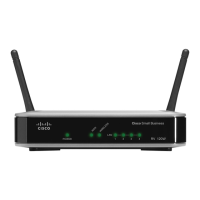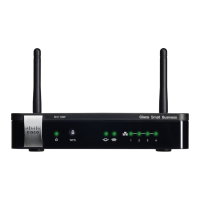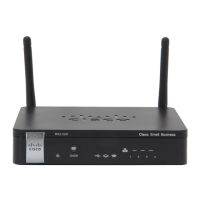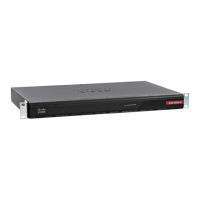Configuring Networking
Configuring Routing
Cisco RV120W Administration Guide 34
2
Adding a DHCP Client to Configuration File Map
This table displays the list of currently configured DHCP Client MAC address to
configuration filename mappings. It has the following fields:
• MAC Address
• Configuration Filename
Click Add to add a new DHCP Client MAC address to configuration filename
mapping. Click Edit to edit the MAC address or boot filename for a particular entry.
Click Delete to delete a particular entry.
Viewing DHCP Leased Clients
You can view a list of endpoints on the network (identified by MAC address) and
see the IP address assigned to them by the DHCP server. The VLAN of the
endpoint is also displayed.
STEP 1 Choose Networking > LAN > DHCP Leased Clients (LAN).
STEP 2 The list of endpoints is displayed; you cannot edit this list.
Configuring Routing
Choosing the Routing Mode
The Cisco RV120W provides two different routing modes. Network Address
Translation (NAT), or gateway routing, is a technique that allows several endpoints
on a LAN to share an Internet connection. The computers on the LAN use a
“private” IP address range while the WAN port on the firewall is configured with a
single “public” IP address. The Cisco RV120W translates the internal private
addresses into a public address, hiding internal IP addresses from computers on
the Internet. If your ISP has assigned you a single IP address, you want to use NAT
so that the computers that connect through the Cisco RV120W are assigned IP
addresses from a private subnet (for example, 192.168.10.0).

